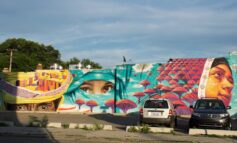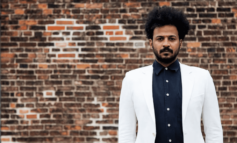
An exhibit of Israeli and Palestinian maps of the Holy Land was designed to further the Spertus Museum’s mission of “addressing questions of contemporary relevance.” But after shutting the exhibit down twice, the museum is raising questions not about the exhibit’s content but about its own legitimacy and relevance.
In the catalog for the exhibit “Imaginary Coordinates,” Rhoda Rosen, the museum director, praised the trustees of the Spertus Institute of Jewish Studies for opening a new $55 million building downtown rather than in the suburbs, “where a large part of the Jewish community of metropolitan Chicago resides.” This meant, to Rosen, that Spertus was adopting “a new mission, aiming to speak to people of all backgrounds,” and while “the new Spertus’ starting point continues to be Jewish experience, the institution does not operate from a partisan point of view.”
“Imaginary Coordinates” was supposed to hang from May 1 until September 7, 2008, coinciding with Chicago’s Festival of Maps and celebrations of Israel’s 60th anniversary. But on May 8, Spertus cited lighting problems and closed the exhibit. A week later, it reopened with modified walls, texts and a new rule: Viewers had to be accompanied by a guide. On June 20, Spertus shut the show for good.
Recent history has not been favorable to museum censorship. The Corcoran Gallery of Art in Washington, D.C., lost significant funding and harmed its reputation when it canceled a show of Robert Mapplethorpe’s photography. Mayor Rudolph Giuliani’s attempt to cut off the Brooklyn Museum’s funding in response to its show “Sensation” also flopped.
But in a conference call with members of the press, Howard Sulkin, president of the Spertus Institute of Jewish Studies, said of the controversy, “We would like to believe that there be just a blip about that.” Philip Gordon, a Spertus trustee, insisted, “This has nothing to do with censorship.” Though Sulkin said parts of the exhibit “were not in keeping with Spertus’ mission as a Jewish institution” and “did not belong at Spertus,” neither he nor Gordon explained what pieces caused the problems, or even who the offended parties were, though pressed by several journalists.
“When you take risks, you learn things,” Sulkin added in a release. “This exhibition caused pain for members of our audience. That was never our intent and we apologize.”
So what were the pieces that were so controversial and which caused such pain? The exhibit included a video installation by Lebanon-born artist Mona Hatoum called “Measures of Distance,” which responds to the Lebanese civil war. Hatoum reads English translations of her mother’s letters, while her mother simultaneously tells stories about herself in Arabic. Another piece by Bethlehem-born Emily Jacir called “Crossing Surda (A Record of Going to and from Work)” represents the artist’s response to the humiliation of being held in line at gunpoint in the freezing rain at a checkpoint in Surda on her way from Ramallah to Birzeit University in Palestine. Jacir illegally filmed her daily commute through a hole in her handbag, which became the footage for the video.
Enas Muthaffar, who was born in Jerusalem, presents a different sort of mapping in her film “A World Apart within 15 Minutes.” In the film, the artist drives through ultra-Orthodox Jewish neighborhoods in West Jerusalem asking for directions to Ramallah. In fact, she cannot be very far from her destination, but most of the people she asks for directions rudely snub her question, effectively telling her though she does not belong they will not even show her the courtesy of helping her leave. The few that genuinely want to help do not even know which direction to point her. Geographically they are not far from Ramallah, but culturally and religiously they are worlds apart.
But perhaps the most controversial work in the show is by an Israeli. Sigalit Landau’s video “Barbed Hula” shows the artist plays with a hula-hoop of barbed wire in the nude on a beach in Tel Aviv. As the wire cuts Landau’s body, the piece perhaps evokes Jesus’ crown of thorns, though Landau locates her work in Middle East boundaries. “This beach is the only calm and natural border Israel has,” she explains in the catalog.
All the “maps” discussed so far are only part of half of the exhibit. The other half, which viewers encountered first upon entering the show, draws from medieval and renaissance maps of the Holy Land. These maps, rather than helping travelers from point A to B as modern maps do, often present mapmakers’ imaginative views of lands that they had never seen, or collages of fact and fiction, Biblical, ancient and contemporary history.
The title alone of Heinrich Bunting’s map, “The Whole World in a Cloverleaf, which is the Coat of Arms of Hannover, My Dear Fatherland,” betrays its partisanship. Bunting (1545-1606) represents Jerusalem as the center of a three-leaf clover, with Africa, Asia, and Europa embedded in the leaves. America barely makes the map, cropped to a small land mass in the bottom left corner.
Bunting must have known the world was not a clover, but he chose to champion his pride in his hometown and to demonstrate his high regard for Jerusalem. His map did not objectively and scientifically interpret land for other people; instead it revealed to others what Bunting himself felt about the different places he depicted. Other maps in the Spertus show included scenes of Jerusalem with Solomon’s temple still standing or with Biblical scenes unfolding in the map’s margins, even as the map was more contemporary.
The older maps and their partisan approach to deciphering space should have served as maps for viewers to use to contextualize the second part of the exhibit. But some viewers missed the lesson, and chose not to appreciate how all the maps were propagandistic but instead to attack only half of the maps as propaganda. A great opportunity was lost when Spertus shut the show down. It is hard to imagine that the institution will recover anytime soon from bowing to its trustees instead of protecting Palestinian artists who graciously participated (perhaps to their careers’ detriment) in an exhibit at a Jewish museum that was supposed to be about dialogue rather than censorship.
A Washington, D.C.-based writer, Menachem Wecker blogs on religion and art at //Iconia.canonist.com





Leave a Reply